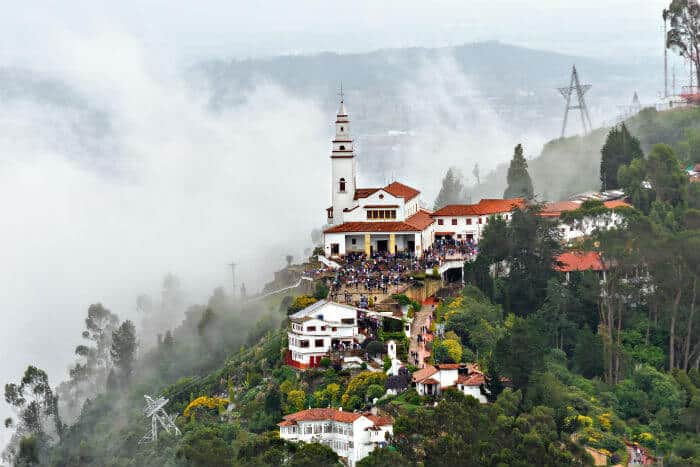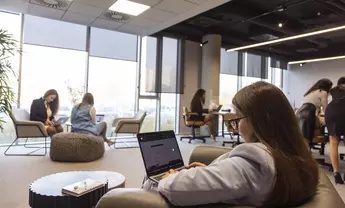Living in Bogota: Colombia’s hotspot for start-ups
August 29, 2023
With an abundant contrast of multiple layers, Bogotá is a place where colonial history collides with the urban metropolis. More and more digital nomads are now living in Bogotá, enjoying the metropolitan life in a booming economy.
Once known for rampant crime, the capital city is rapidly evolving into a world-class urban destination for many expats and explorers.
Along with Colombia’s top educational institutions, Bogotá is the country’s economic and political hub. Direct foreign investment in Colombia increased by 26.1% in 2021 and reached $9.85 billion in 2022, and over 200 foreign enterprises have entered the Colombian market in the past five years.
Bogota is also a target for immigration from people disgruntled with the lack of freedom in their home countries.
Sign up for our Weekly Rundown for more hand-picked insights on greater freedom, global investments, citizenship and residency, real estate, and tax plans.
Despite its past, Bogota is a bustling and increasingly safe city with expat-friendly neighborhoods like Chapinero Alto that attract both wealthy Colombians and foreigners. Here’s what you need to know about living in Bogota.
Cost of Living and Safety in Bogota
Colombia is at the end of its long-running armed conflict, most of which takes place in more rural areas. However, the displacement of people that spill into the major cities is one of the many issues the city faces.
Safety precautions and efforts are increasing, as are the tourism and expat numbers.
The city offers a number of safe transport, including modern and convenient app-based transportation like Uber and Tappsi.
If you do decide to take a city taxi, be sure to verify that it is a clearly marked official taxi; you can expect to pay around $1 per mile. Bogotá’s infrastructure has yet to relieve the horrendous traffic the city faces.
Leaving the workplace at odd hours can help, but you can expect long commutes throughout the inner city on most days of the week.
The cost of living in Bogotá will vary depending on the area; however, you can generally expect to pay around $6 for a traditional Colombian lunch and around $10 to $20 for a nicer dish in upscale areas.
Groceries will run a couple around $400 a month, while a gallon of milk costs about $1.60, a dozen eggs around $1.90, and a bottle of wine around $7.50.
Bogotá’s Booming Start-up Economy
Bogotá is Colombia’s capital for business as well as Latin America’s fifth-largest economy by GDP. The city was named one of the top 15 new cities in the world to do business by Fortune magazine.
Colombia is also one of the best economies in Latin America for entrepreneurs based on the fact that it takes mere days to incorporate a company.
The Heritage Foundation has echoed Colombia’s favorable regional position in terms of economic freedom.
Besides start-ups, large multinational companies like Citi and McDonald’s have been growing their presence, as well as an array of call centers and other regional service businesses.
Investors and entrepreneurs in Colombia are met with the second-largest skilled labor workforce in Latin America. There are over four million workers and approximately 94,000 higher-education graduates per year.
The start-up scene has been moving forward at a decent rate due to a number of incubators in Bogotá. The numbers of engineering and computer science graduates are a major contribution to the country’s growing technology ecosystem.
In addition, the government has worked arduously to provide a greater portion of Colombia with affordable high-speed broadband access. Foreign investors and expats are noticing the stability in the economy that Colombia has shown over recent years.
Colombia’s tax offers and incentives, competitive costs, and abundant skilled workforce make Bogotá a major competitor for offshore operations. Bogotá’s location allows for convenience when managing an international business.
The international airport is just twenty minutes from the city center and offers non-stop access to cities like New York and Mexico City within a few hours.
Monserrate serves as a gorgeous backdrop for Bogota’s natural and cultural offerings.

Culture in Bogotá
Bogotá offers more than 4,000 public parks as well as one of the largest networks of bike paths in the world, which can be enjoyed even more so on Sundays when the city shuts down almost 200 miles of road exclusively for pedestrian use.
This engaging capital is complete with over fifty museums ranging from history, science, art, and gold. Previously preserved churches, colonial buildings, and historic neighborhoods are met with modern shopping malls, sophisticated restaurants, and an electric nightlife scene.
Most gravitate toward the cobbled historical epicenter of La Candelaria, where the majority of Bogotá’s traditional attractions are located, including museums, cuisine, nightlife, and entertainment.
For shopping, most expats stay in the malls in the city’s north, where popular international brands have set up shop.
Real Estate in Bogotá
Bogotá is divided into four areas. The north has a modern infrastructure built for upscale living, complete with chic entertainment as well as the numerous headquarters of multinational corporations. This is where most Western expats live.
El Occidente is a middle-class residential area offering numerous parks as well as some of the city’s major sporting venues. The center – El Centro – is the original downtown area and includes many of the city’s public offices and financial headquarters, yet it isn’t as nice as the northern part of the city.
The South is home to the working class, where neighborhoods continue battling crime. The price of property has doubled in the past twenty years in Colombia. There are still excellent opportunities to be seized even within Bogotá’s more upscale neighborhoods.
Most expats and investors should seek out properties within the city’s North zone, which is a safer and newly developed area.
We advise following our Ultimate Guide to How to Invest in Real Estate Overseas and seeking the help of a professional when purchasing real estate here, given the potential for property scams and the complicated process that determines your ongoing ownership costs.
Colombian Citizenship
If you’re looking to start a business or invest in Colombia, there are potential immigration benefits, including citizenship.
You can obtain citizenship in Colombia in as little as five years by investing in either property or starting a business. Getting started with a second residency in Colombia is quite affordable and doesn’t take as long as some other citizenship programs.
Colombia is one of the most interesting countries in South America, with attractive real estate investment opportunities for those who are a little bit more adventurous and offers a path to citizenship.
Are you interested in getting residency or citizenship in Colombia?
Nomad Capitalist is a boutique consultancy firm that helps seven and eight-figure entrepreneurs and investors legally go where they are treated best with lower taxes, more diversified assets, second residents, second citizenship, and more freedoms. Apply today to create your bespoke plan.


Is Grenada Safe for Visitors, Residents and Families?
Evaluating a nation for tourism, relocation or investment begins with a single, non-negotiable factor – safety. Security, from both a personal and financial point of view, is the foundation upon which all other considerations rest. And while it’s easy to assume that stability is a given in the developed world, recent challenges in countries like […]
Read more

Is Antigua Safe for Tourists, Families and New Residents?
Security is a cornerstone of any serious investment migration strategy. For high-net-worth individuals (HWNIs) and globally mobile families, it ranks alongside tax efficiency, political stability, and quality of life as a key driver in deciding where to live, invest or acquire a second passport. Too often, safety is assumed to align with economic development. Countries […]
Read more

Is St Kitts and Nevis Safe? Tips for Tourists and Residents
Safety is a non-negotiable factor for anyone considering whether a country is right for travel, relocation or investment. Overlooking such a vital consideration carries serious consequences, and the stark truth is that assumptions based on a country’s global image often fall short of reality. Cases in point include the following countries: The takeaway is clear: […]
Read more




